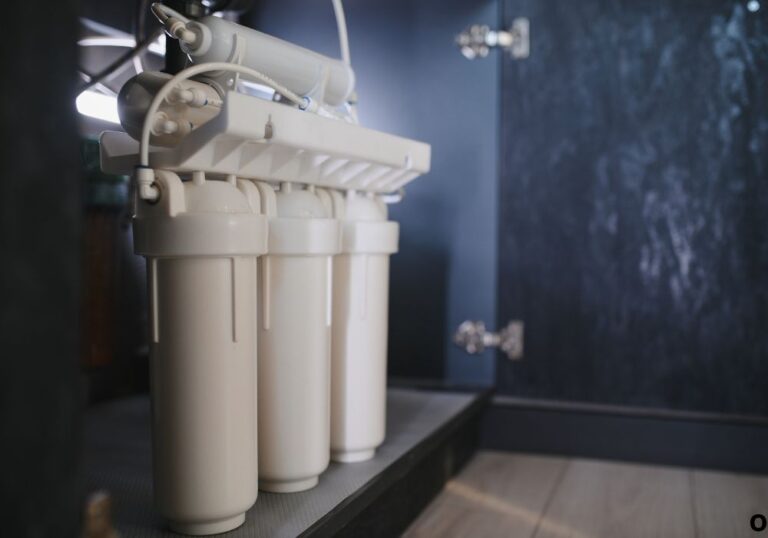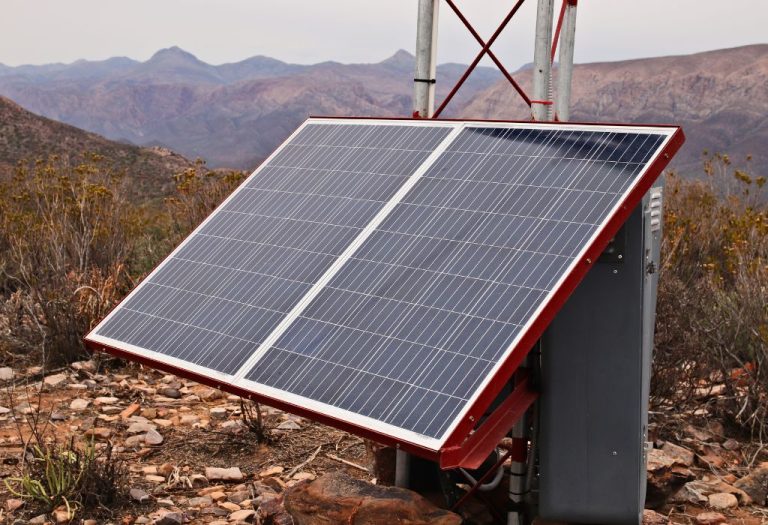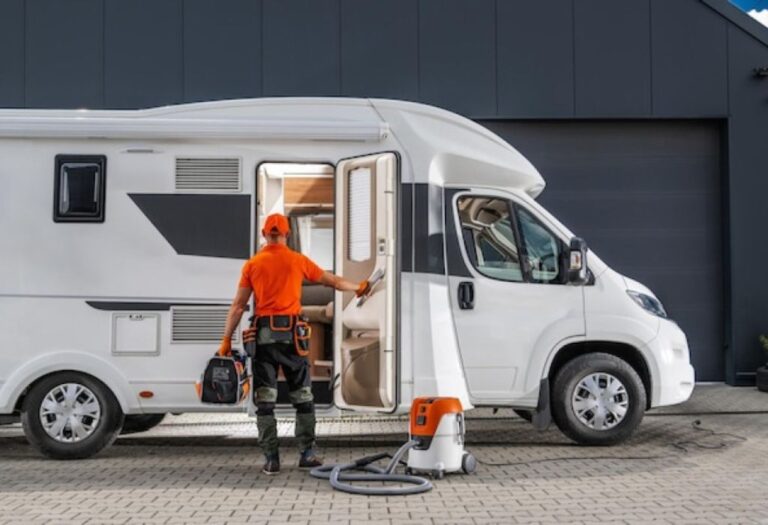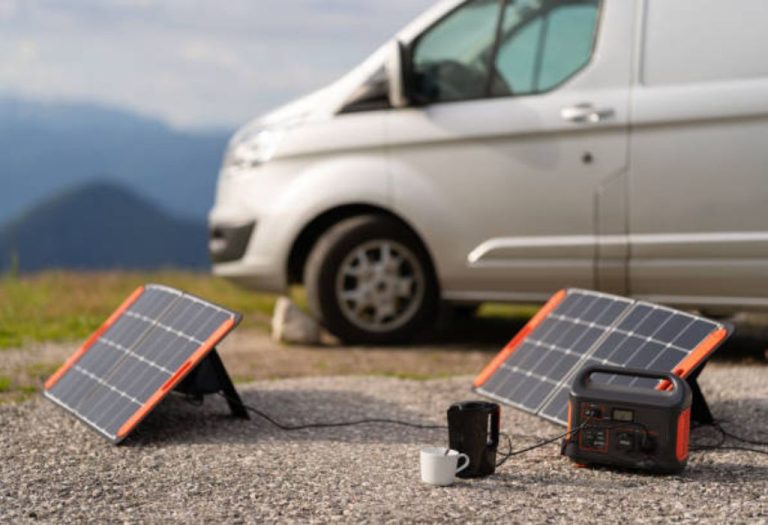How Often Should I Change My RV Water Filter? Complete Guide
You pour a glass of water from your RV faucet and notice a slight odor, off taste, or cloudiness. Even if your water source is safe, an old or clogged RV water filter can compromise water quality.
Changing your RV water filter on time is essential to ensure clean, safe drinking water, prevent sediment buildup, and protect your plumbing system. Different types of filters have different lifespans, and usage patterns affect how quickly a filter reaches its capacity.
In this guide, we’ll explain how often to replace your RV water filter, the signs it’s time for a change, and step-by-step instructions for safe replacement. Following these tips will help you enjoy fresh, safe water on every trip, keeping your RV plumbing in top condition.
Types of RV Water Filters

RV water filters come in several varieties, and the type you use affects replacement frequency:
- Inline Filters: Connected directly to the city water inlet; often carbon-based and designed for sediment, taste, and chlorine removal. Typically replaced every 3–6 months.
- Gravity or Pitcher-Style Filters: Portable filters that treat water in a jug or pitcher; usually changed every 2–3 months depending on usage.
- Reverse Osmosis (RO) Systems: Multi-stage filtration systems that remove nearly all contaminants; pre-filters replaced every 6–12 months, membranes every 12–24 months.
- Activated Carbon, KDF, and Multi-Stage Filters: Often used in combination for better chemical and taste removal; replacement intervals vary by manufacturer and usage.
Selecting the right type ensures proper water quality and affects how often you need to change the filter.
Factors That Affect Filter Replacement Frequency
Several variables determine how often your RV water filter needs replacing:
- Water Source Quality: Municipal water may contain chlorine and chemicals, while well or remote sources may have sediment or bacteria, which can clog filters faster.
- Frequency of Use: Daily RV use will fill filters quicker than occasional weekend trips.
- Number of Users: More people increase water consumption, accelerating filter depletion.
- Filter Capacity: Each cartridge has a rated number of gallons or months. Exceeding this reduces effectiveness.
- Signs of Clogging or Reduced Flow: Even before the rated lifespan, some filters may need replacement if water flow slows or quality declines.
By monitoring these factors, you can maintain clean water and prevent damage to your RV plumbing system.
Recommended Replacement Intervals
While replacement schedules vary by filter type and usage, general guidelines include:
- Inline Carbon Filters: 3–6 months, depending on water quality and gallons used.
- RO Pre-Filters: 6–12 months; RO membranes last 12–24 months.
- Pitcher or Gravity Filters: 2–3 months, depending on consumption.
- Specialty Multi-Stage Filters: Follow manufacturer instructions; often every 3–6 months.
Remember, these are general guidelines. Observing water taste, odor, clarity, and flow rate is equally important for timely replacement.
Signs Your RV Water Filter Needs Replacing

Even if you haven’t reached the suggested replacement period, the following signs indicate it’s time to change your filter:
- Reduced Water Flow: Slow or weak flow at faucets or showerheads.
- Strange Taste or Odor: Water develops a metallic, chemical, or off taste.
- Sediment or Cloudiness: Visible particles in water.
- Discoloration: Water may appear brownish or murky.
Regularly monitoring these signs ensures your filter continues to provide safe, clean water for all onboard activities.
Step-by-Step Guide to Replacing Your RV Water Filter
Replacing your RV water filter is straightforward when done carefully:
- Turn Off Water Supply: Shut off the city water connection or close the valve to prevent leaks.
- Relieve Pressure: Open a faucet to release pressure in the system.
- Remove Old Filter: Disconnect the old filter from the inlet or housing; check for debris or wear in fittings.
- Install New Cartridge: Insert the new filter, ensuring a proper seal with rubber washers or O-rings.
- Reconnect and Flush: Turn on the water supply and run water through all faucets, including showers, until it runs clear. This removes any carbon fines or residue from the new filter.
- Check for Leaks: Inspect all connections and tighten if necessary.
Following these steps ensures safe water delivery and protects your plumbing system from leaks or contamination.
Tips for Extending Filter Life
- Pre-filter Water: Use a sediment filter to remove large particles before the main filter.
- Use High-Quality Cartridges: Better media lasts longer and removes contaminants more effectively.
- Avoid Hard Water Damage: If water is highly mineralized, clean and flush systems more frequently.
- Flush After Storage: After leaving the RV unused, flush old water and run fresh water through the filter before use.
Proper maintenance not only extends filter life but ensures water quality remains high throughout your trip.
Common Mistakes to Avoid
- Forgetting the replacement schedule and using an expired filter.
- Overlooking differences between filter types and capacities.
- Failing to flush the system after installing a new filter.
- Ignoring signs of reduced water quality or flow.
Avoiding these mistakes ensures safe, clean, and reliable water in your RV.
Frequently Asked Questions (FAQs)
How often should I change my RV water filter?
Most inline carbon filters should be changed every 3–6 months, depending on usage and water quality.
Can I wait until the water tastes bad to change the filter?
It’s not recommended. Waiting for noticeable taste or odor may indicate the filter is already overloaded and less effective.
Does the number of people using the RV affect filter lifespan?
Yes, more people mean higher water consumption, which can shorten the filter’s effective life.
Are there different replacement intervals for RO systems?
Yes, pre-filters are typically replaced every 6–12 months, while RO membranes may last 12–24 months.
Can dirty or hard water clog my RV filter faster?
Absolutely. Sediment, minerals, and impurities can reduce flow and reduce filtration effectiveness.
How do I know if my filter is still working?
Check water flow, taste, odor, and clarity. Reduced flow or unpleasant taste indicates the filter may need replacement.
Can I use any brand of replacement filter?
It’s best to use the manufacturer-recommended filter to ensure compatibility and proper filtration performance.
What happens if I don’t replace the filter on time?
Old filters can harbor bacteria, reduce water quality, and decrease flow, potentially damaging your RV plumbing.
Do low-flow faucets or showerheads affect filter life?
Yes, lower flow can slightly extend filter life because less water passes through per day, but it doesn’t eliminate the need for scheduled replacement.
Is it safe to reuse a partially used filter?
No. Filters lose effectiveness over time, even if partially used, so replacing them according to schedule is safest.
Conclusion: Keep Your RV Water Safe and Clean
Changing your RV water filter regularly and on schedule is crucial for maintaining safe, clean water for drinking, cooking, and bathing. Most inline filters last 3–6 months, but usage, water quality, and number of people on board can affect lifespan.
By monitoring water taste, odor, clarity, and flow, you can replace your filter at the right time. Combining proper replacement with pre-filtering and flushing practices ensures your RV water system stays healthy, efficient, and ready for all your adventures.
I’m David R. Coleman, the founder, lead writer, and lifelong tool enthusiast behind GarageToolPro.com. With years of experience in automotive repair, woodworking, and home DIY projects, I created this platform to share practical tips, detailed tool reviews, and step-by-step guides that help mechanics, hobbyists, and homeowners get the job done right the first time.






